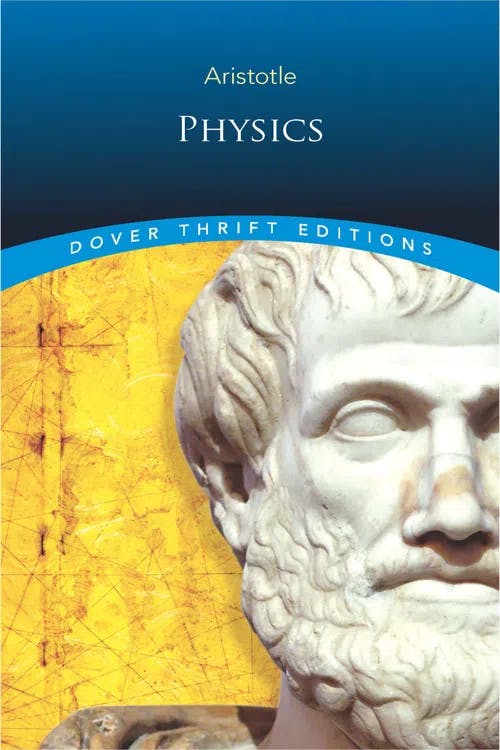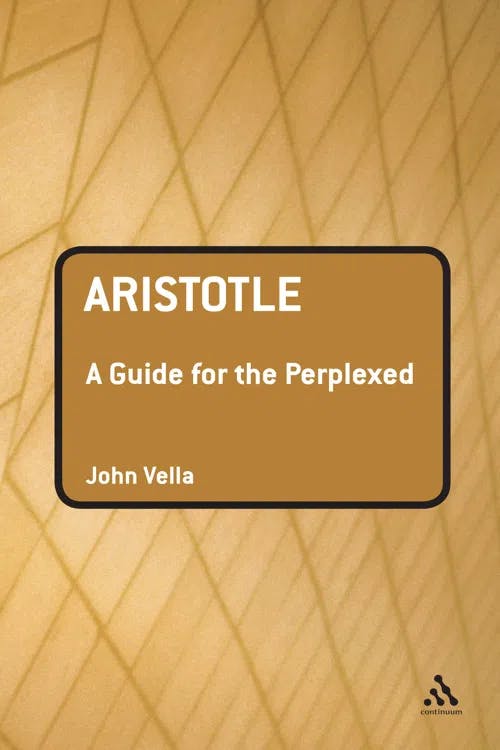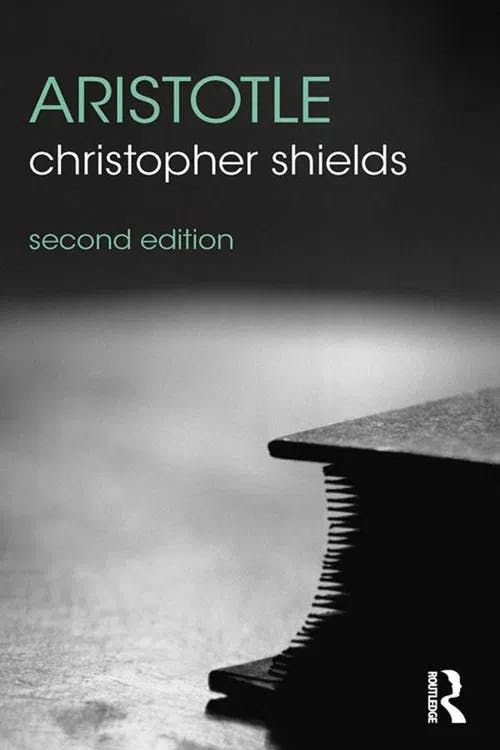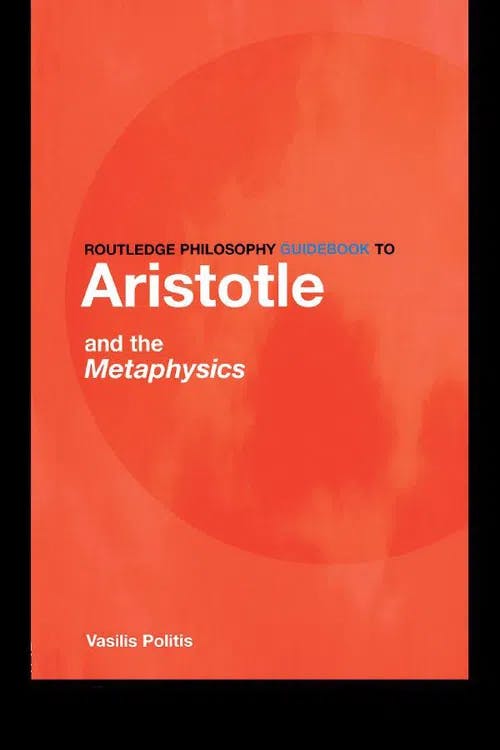What are Aristotle’s Four Causes?
MA, English Literature (University College London)
Date Published: 06.07.2023,
Last Updated: 21.12.2023
Share this article
Defining the four causes
Aristotle (384–322 BCE) is a key figure in the history of Western philosophy, with his influence radiating out to a range of other disciplines including biology, politics, and even art.
Aristotle’s four causes are central to his metaphysics; his fundamental understanding of reality. In a basic sense, they are the ways by which he explains the “why?” of everything that exists. We must answer these “why?” questions, Aristotle argues, if we hope to gain true knowledge. As Aristotle tells us in Physics (fourth century BCE, [2017]),
Knowledge is the object of our inquiry, and men do not think they know a thing till they have grasped the ‘why’ of it (which is to grasp its primary cause).
Aristotle
Knowledge is the object of our inquiry, and men do not think they know a thing till they have grasped the ‘why’ of it (which is to grasp its primary cause).
Aristotle sees the causes, then, as central to philosophy’s fundamental mission. As Andrea Falcon explains,
For Aristotle, a firm grasp of what a cause is, and how many kinds of causes there are, is essential for a successful investigation of the world around us. ("Aristotle on Causality," The Stanford Encyclopedia of Philosophy, 2023)
Our modern sense of “cause” (as one thing leading directly to another) is often highlighted as a mental stumbling block when it comes to approaching Aristotle’s four causes. Although the causal element is definitely present (as we will explore), it may be helpful to also think of the four causes as Aristotle’s four “explanations” for why things are the way they are, and why they change. In addition to this metaphysical component, Aristotle believes that his four causes have an epistemological component — granting us true knowledge of phenomena (Falcon, 2023).
Crucially, Aristotle’s search for these explanations is inextricably tied to his materialism. He is concerned with what we can actually perceive empirically, with our senses. True knowledge, Aristotle argues, must start from this basis: what can we actually observe, and sense, about the world around us? With this emphasis on material observation, Aristotle established an early version of what we think of today as the scientific method. As John Vella explains, Aristotle’s empiricism was by no means the norm in his own time:
For Aristotle, the stated goal of scientific explanation is to ‘save the phenomena’. The phenomena are the appearances that we experience; the phenomena are the way things seem to our senses. It may sound uncontroversial to seek to save the phenomena, but Aristotle's approach is quite radical when compared with the rationalist tradition in Greek philosophy. Whereas other philosophers, notably Socrates, Plato and Parmenides, often explained away the phenomena or appearances as being unreal or false, Aristotle seeks to preserve the appearances and to explain how and why the appearances are the way they are. (2008)
John Vella
For Aristotle, the stated goal of scientific explanation is to ‘save the phenomena’. The phenomena are the appearances that we experience; the phenomena are the way things seem to our senses. It may sound uncontroversial to seek to save the phenomena, but Aristotle's approach is quite radical when compared with the rationalist tradition in Greek philosophy. Whereas other philosophers, notably Socrates, Plato and Parmenides, often explained away the phenomena or appearances as being unreal or false, Aristotle seeks to preserve the appearances and to explain how and why the appearances are the way they are. (2008)
The four causes Aristotle advances in aid of this materialistic mission, then, are as follows:
- The material cause. What is the phenomenon made of?
- The formal cause. What form does the phenomenon take?
- The efficient cause. How did the phenomenon happen?
- The final cause. What is the phenomenon’s final purpose?
As Christopher Shields explains, Aristotle considers each of these four causes to be both necessary and sufficient when it comes to explaining reality:
The necessity condition: an explanation is adequate only if it correctly cites each of the four causes; any account which omits a cause where one is available is incomplete and so inadequate. The sufficiency condition: once an explanation has cited each of the four causes, it has left nothing out, and so is complete and adequate as an objective explanation. (2014)
Christopher Shields
The necessity condition: an explanation is adequate only if it correctly cites each of the four causes; any account which omits a cause where one is available is incomplete and so inadequate. The sufficiency condition: once an explanation has cited each of the four causes, it has left nothing out, and so is complete and adequate as an objective explanation. (2014)
In Aristotle’s view, other philosophers’ causal explanations of reality were insufficient: “They lacked a complete understanding of the range of possible causes and their systematic interrelations” (Falcon, 2023). Aristotle lays out his argument for the four causes in both Physics and Metaphysics (fourth century BCE), and in the sections that follow we will assess each cause in turn.
1. The material cause
The material cause is arguably the most straightforward. In Aristotle’s view, the material cause provides an explanation of something’s material composition. He describes the material cause as:
that out of which a thing comes to be and which persists [...] e.g., the bronze of the statue, the silver of the bowl [...] (Physics, fourth century BCE, [2017])
In other words, the material cause answers the question “What is it made of?” When Aristotle seeks an explanation for the changes that make up the universe and everything that exists, the material cause refers to the material involved. For a bronze statue to come into being, it requires bronze as its material cause. Likewise, a silver bowl requires silver. If we are seeking an explanation for the phenomenon of a simple wooden chair, for example, the material cause is the wood it is composed of. For Aristotle, the material cause is to do with matter itself.
2. The formal cause
The formal cause is what gives something its form and structure. To follow on from Aristotle’s example of the bronze statue, the formal cause here would be what gives the statue its specific shape and appearance. Aristotle also believes that the formal cause is closely tied to essence and identity, describing it as “the form or the archetype, i.e., the statement of the essence” (Physics, fourth century BCE, [2017]). The statue has the essence of a statue, rather than a mere lump of bronze, because it is formed in a specific shape. Likewise, a chair has the essence of a chair because the material it is composed of has been given this specific form.
It is interesting to note, here, that Aristotle’s view of forms contrasts with Plato’s. Plato’s theory of Forms holds that the forms of our material world are merely imperfect copies of transcendent archetypes (Forms with a capital “F”) which lie outside of time and space. Aristotle, on the other hand, argues that the forms taken by phenomena are intrinsic to them — and very much of the material world.
Vasilis Politis helps us to unpack Plato’s thinking here: for Plato, “only changeless forms are perfectly real, since he thinks that the mark of a thing’s being real is its having a firm and changeless essence” (Routledge Philosophy Guidebook to Aristotle and the Metaphysics, 2004). As things in the material world are constantly changing, Plato concludes that they do not have an essence — and that they are therefore not as real as the transcendent essences from which they are drawn. Aristotle profoundly disagrees, and Politis even argues that this disagreement may be at the root of Aristotle’s theory of the four causes:
It is above all to defend the view that changing things have changeless essences that Aristotle develops the theory of the four explanations and causes of changing things. (2004)
Vasilis Politis
It is above all to defend the view that changing things have changeless essences that Aristotle develops the theory of the four explanations and causes of changing things. (2004)
To unpack Aristotle’s thinking on the changeless essences of changing things, it is helpful to highlight his distinction between substantial and accidental forms. As Shields explains,
we may think of a substantial form as the kind of feature whose presence makes a being what it is, and which, when lost, results in that being's ceasing to exist. Accidental forms, by contrast, may come and go without threatening the existence of the beings whose forms they are. (2014)
In other words: although our body may change over time, Aristotle argues that these kinds of “accidental” changes do not change our “substantial” form and essence. Even when our skin wrinkles and our hair turns gray, we retain the form (and essence) of a human. Just as a tree retains the form of a tree, even when its leaves change color and fall to the ground.
As we will see, the importance Aristotle places upon form and essence underlies much of his thinking on the four causes in general.
3. The efficient cause
As Shields summarizes, “It is often said that the efficient cause is most like our notion of cause: it is that which brings about visible motion and alteration in the world” (2014). When we ponder how a set of circumstances has transpired, how something has moved from A to B, we are searching for its efficient cause — the active cause of the movement we see. As Shields continues:
Aristotle identifies a kind of cause which is responsible, as an active feature, for bringing about the change we witness in the world. He characterizes this cause in various ways but his language invariably makes clear that he understands the efficient cause as the kind of cause which initiates motion: the moving cause (to kinoun); as the source of change (archê tês kinêseôs), or simply as what, primarily, moved something (ti prôton ekinêse) [...]. (2014)
Christopher Shields
Aristotle identifies a kind of cause which is responsible, as an active feature, for bringing about the change we witness in the world. He characterizes this cause in various ways but his language invariably makes clear that he understands the efficient cause as the kind of cause which initiates motion: the moving cause (to kinoun); as the source of change (archê tês kinêseôs), or simply as what, primarily, moved something (ti prôton ekinêse) [...]. (2014)
The efficient cause, in our familiar case of the bronze statue, is the process by which its material takes the form of a statue. Each step along that journey of change, and each person who contributes to it, would together constitute the bronze statue’s efficient cause. The efficient cause of a chair would be the carpenter and their actions. To follow the logic even further, it could even be said that the chair’s efficient cause is everything that in any way contributed to the movement and/or change of its matter until it reached the form of a chair. This could include the sunlight and soil that helped the tree to grow, as well as the network of processes by which it was cut down and transported as a raw material.
In short, the efficient cause is related to the underlying movements which lead to any given phenomenon or event.
Digging a bit deeper into the efficient cause, however, it is notable that “Aristotle thinks of efficient causes as processes, rather than as static events,” and that “actual particular causes are not prior in time to their effects, but are co-temporaneous with them” (Shields, 2014). The formal cause also has a role to play in the efficient cause. Aristotle tells us that a “father” is the “cause of the child,” for example — although this is clearly an efficient cause, it is only made possible by the man’s form, which is then passed on to the child. As Politis explains, this is where Aristotle’s efficient cause diverges from our modern conception of causal movement: “For the modern conception of an efficient cause does not involve the supposition that it is the form of a thing that is such a cause” (2004).
4. The final cause
Finally, we reach the final cause. Aristotle describes the final cause as “‘that for the sake of which’ a thing is done, e.g., health is the cause of walking about” (Physics, fourth century BCE, [2017]). For Aristotle, the final cause is the ultimate purpose, or telos, that a given phenomenon has. As Shields explains, the final cause is a crucial component of Aristotle’s overall causal model:
Now, and arguably only now, do we have an explanation of the artefact: only when we ascertain its function, only when we know what it is for, only, that is, when we have grasped its final cause, do we have the explanation we were seeking. (2014)
To continue with our previous examples, we can see that the bronze statue’s final cause is to have an effect on those who see it — maybe it is celebrating a particular figure, or commemorating a particular tragedy that its creators want us to remember. The final cause of a chair can be said to support a human, as it is designed with this purpose in mind.
As we can see, final causes are straightforward to trace for those objects which are created by humans for a specific purpose. A hair brush’s final cause is to brush hair, a toaster’s final cause is to toast bread. But what about nature and the wider universe? Can the movement of living creatures, the sea, or the planets in our solar system, really be said to have a final cause — a final purpose? Would this not be a naive anthropomorphization of natural forces, which simply move according to the interplay of biology, chemistry, and physics?
This, however, is exactly Aristotle’s argument. As Vella explains, the final cause “reveals Aristotle’s teleological conception of nature” (2008) — for Aristotle, everything in nature does have a final purpose. Crucially, too, Aristotle “wants to argue that some entities have final causes even though they were not given those causes by the activities of conscious designing agents” (Shields, 2014). For Aristotle, purpose is not tied to intentionality; instead, it is something that is naturally present in a phenomenon’s form. Vella further explains that,
For Aristotle, all natural processes aim at some good for the natural substance involved in the process. Each natural substance pursuing its ends is doing its part in furthering the supreme good of the whole of nature. (Vella, 2008)
This idea of the “supreme good” is an important one. For Aristotle, natural beings — including us — are acting with the final cause of our own good in mind. It is the only thing that is desirable for its own sake; the end goal to which all we do is oriented. Aristotle understands this supreme good as eudaimonia, which can also be understood as a life of successful flourishing. This, then, is where we come to what Aristotle’s four causes mean for humanity. As Vella argues,
In this context, the material cause is the body of the human being; the formal cause is the soul of the human being. The efficient cause is the agent who takes action. The final cause is the cause for the sake of which, i.e. the end or goal sought through the action. Why does this human being perform action X? Aristotle's reply: in order to become happy or successful. All actions that we do contribute to achieving this final cause; this final cause is the reason why we do anything. It is the chief and final good. (2008)
John Vella
In this context, the material cause is the body of the human being; the formal cause is the soul of the human being. The efficient cause is the agent who takes action. The final cause is the cause for the sake of which, i.e. the end or goal sought through the action. Why does this human being perform action X? Aristotle's reply: in order to become happy or successful. All actions that we do contribute to achieving this final cause; this final cause is the reason why we do anything. It is the chief and final good. (2008)
This “chief and final good,” this concept of eudaimonia, also underpins Aristotle’s entire ethical model. Aristotle’s virtue ethics emphasizes the importance of having a virtuous character, and Aristotle regards virtue and eudaimonia as being inextricable from one another: a good life is a virtuous life. Virtuous human flourishing is held to be the ultimate good, and the final cause of our lives. In other words, eudaimonia is our telos — our final purpose.
In summary, then, Aristotle believes that the final cause of humans is to live virtuous lives in order to achieve eudaimonia. Just as with the rest of the natural world, Aristotle argues that our human purpose naturally follows from our form, and is not ordained by any God-like figure: “We have final causes, though no-one has given them to us” (Shields, 2014).
For a deeper discussion of Aristotle’s virtue ethics, you can explore our dedicated study guide on the topic.
Unpacking the four causes
Throughout our discussion of the four causes, we can see that they overlap with each other in places and are not always clearly delineated. If we return to the final cause, for example, the formal cause is once again implicated:
[Aristotle] concludes that the end-state at which a process of generation is directed, and which explains why this process is as it is and takes place as it does, is primarily the form of the thing that is generated. (Politis, 2004)
The form something takes, then, is in this way part of its final purpose. We may be looking for a clearer line to differentiate the four causes but, as Vella argues, Aristotle does not really draw a line: “nowhere does Aristotle suggest that one type of cause excludes another. These four causes or explanations are thus not mutually exclusive, but rather mutually complementary” (2008). Aristotle recognizes that the world is complicated, and that it can be difficult to entangle an entirely separate cause from the other factors which cling to it.
More questions emerge, too, when we delve into the extended logic of the four causes. To illustrate this point, let’s return to our simple example of a wooden chair and the tree(s) it is made from. Was the tree’s final cause always to be made into furniture? Depending on our perspective, after all, a tree could be said to have many kinds of final causes (or purposes). Its purpose may be to simply follow its natural course: to grow tall, live many years, spread its seed, and so on. From a more human-centered view, we could say that a tree’s final cause is to contribute to the beauty of the countryside, and contribute in this way to our own purpose of achieving happiness (or eudaimonia). Or its purpose may be to provide much-needed shelter in a storm. Its final cause may also lie in the use of its matter for other purposes — maybe to become a ship, or the chair we have already mentioned, which will support humans and (to some degree) also help us in our quest for eudaimonia.
These may all be questions without a clear answer, but Aristotle was aware of this ambiguity.
Closing thoughts
With the benefit of modern scientific knowledge, Aristotle’s metaphysical musings on the four causes behind everything in reality can seem naive and short-sighted. With his early scientific method, however, Aristotle laid the groundwork for later discoveries to come. Aristotle prized the empirical principle of scientific observation; and created a rigorous process of defining and categorizing all we can see. His influence on biology, for example, is particularly apparent. In Vella’s view,
No human being before or since has towered over human wisdom as Aristotle did. From his death in 322 BC until the rediscovery of Plato's works during the Renaissance, Aristotle reigned supreme and unchallenged as the master of those who know. Aristotle's intellectual range is absolutely astonishing; he wrote in every field of human inquiry, and he was considered the ultimate authority in nearly every subject. (2008)
Throughout his long and influential legacy, Aristotle was sometimes simply referred to as “the philosopher” — and the four causes are foundational to his philosophy. Aristotle’s virtue ethics, in particular, continue to be popular and influential even in modern times.
Regardless of our own opinion on the sagacity of the four causes, their place in philosophical history should not be underestimated.
Further reading on Perlego
- Knowledge in a Nutshell: Classical Philosophy (2019) by Michael Moore
- Aristotle (2013) by Carlo Natali, edited by D. S. Hutchinson
- Introducing Aristotle: A Graphic Guide (2015) by Rupert Woodfin and Judy Groves
- Aristotle: Philosophy in an Hour (2012) by Paul Strathern
What are Aristotle’s four causes in simple terms?
Who is Aristotle?
Where does Aristotle explain his four causes?
What are the best books on Aristotle’s four causes?
Bibliography
Aristotle (2017) Physics. Dover Publications. Available at: https://www.perlego.com/book/510326/physics-pdf
Aristotle (2017) The Metaphysics. Dover Publications. Available at: https://www.perlego.com/book/546380/the-metaphysics-pdf
Falcon, A. (2023) “Aristotle on Causality,” The Stanford Encyclopedia of Philosophy. Spring 2023 Edition. Available at: https://plato.stanford.edu/archives/spr2023/entries/aristotle-causality/
Gill, M. L. (2020) Aristotle on Substance. Princeton University Press. Available at: https://www.perlego.com/book/1891995/aristotle-on-substance-the-paradox-of-unity-pdf
Halper, E. (2012) Aristotle’s ‘Metaphysics’. Bloomsbury Publishing. Available at: https://www.perlego.com/book/1357579/aristotles-metaphysics-a-readers-guide-pdf
Politis, V. (2004) Routledge Philosophy Guidebook to Aristotle and the Metaphysics. Taylor and Francis. Available at: https://www.perlego.com/book/1611782/routledge-philosophy-guidebook-to-aristotle-and-the-metaphysics-pdf
Ross, D. (2005) Aristotle. 2nd edn. Taylor and Francis. Available at: https://www.perlego.com/book/1602628/aristotle-pdf
Shields, C. (2014) Aristotle. 2nd edn. Taylor and Francis. Available at: https://www.perlego.com/book/1554338/aristotle-pdf
Strathern, P. (2012) Aristotle: Philosophy in an Hour. HarperCollins Publishers. Available at: https://www.perlego.com/book/710825/aristotle-philosophy-in-an-hour-pdf
Vella, J. (2008) Aristotle: A Guide for the Perplexed. Continuum. Available at: https://www.perlego.com/book/805941/aristotle-a-guide-for-the-perplexed-pdf
MA, English Literature (University College London)
Andy Cain has an MA in English Literature from University College London, and a BA in English and Creative Writing from Royal Holloway, University of London. His particular research interests include science fiction, fantasy, and the philosophy of art. For his MA dissertation, he explored the presence of the sublime in Shakespeare’s plays.




